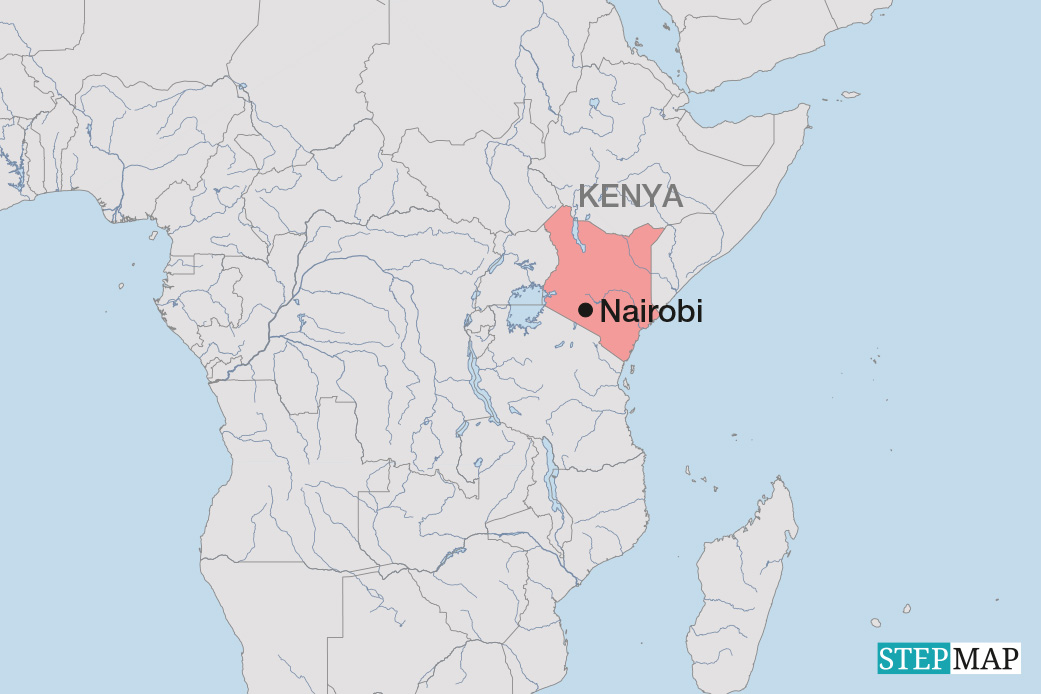Global warming
“Very limited human resources”
[ Interview with Cynthia Awuor and Andrew Adwera ]
What impact will climate change have on the Mombasa agglomeration?
Awuor: Mombasa faces several serious risks due to climate change. They include
– increased flooding, especially in the low-lying areas,
– potential for submergence or, in other words, total loss of some of those areas,
– increased salinity in soils and water due to salt water intrusion inland, which, among other things, would affect drinking-water provision as well as peri-urban farming,
– more coastal storm damages,
– more sea shore erosion and
– higher health risks to many people.
What health risks are you thinking of?
Adwera: The major health hazards in the city include water-borne and diarrhoeal diseases such as Cholera. These problems are likely to be exacerbated, as the relevant infrastructures are overstretched already. In addition, heat stress may be experienced due to even higher temperatures in a quite humid setting.
Who are the people likely to be most affected?
Awuor: The people most in danger are poor residents who live in informal, unplanned settlements in the low-lying areas of the agglomeration. These areas include the neighbourhoods Bombolulu, Kisauni, Mlangoni, Mwandoni, Kongowea and Likoni.
How many people live in Mombasa – and how many of them are poor?
Awuor: Mombasa has about 856,000 inhabitants, and the population is estimated to grow by about four percent per annum. The rapid population growth rate has outpaced infrastructure development and social services provision. The city currently faces myriad challenges ranging from inadequate and poor quality housing and sanitation, to frequent water shortages. Mombasa is the largest seaport in East Africa, serving in Kenya, Uganda, Northern Tanzania, Rwanda, Burundi and the Democratic Republic of Congo. It is also a popular tourist destination and home to various industries. The local economy is quite dynamic, which is why the city attracts many newcomers. On the other hand, many people in Mombasa are desperately poor. The latest figures are of 1997, back then, some 38 % were facing absolute poverty.
What must be done to protect the poor from climate-change impacts?
Awuor: First of all, it is essential to provide timely early-warning information, both for climatic and non-climatic disasters. It is also important to enhance communities’ capacity to deal with disasters. For that purpose, effective disaster management plans must be drafted, and the poor must be involved in development planning and implementation.
But what difference do official plans make? In most cities of developing countries, formal town planning is not enforced.
Adwera: In Mombasa, it would indeed make sense to enforce Kenya’s Physical Planning Act along with the city’s by-laws, in order to make sure that areas earmarked for basic services – such as water and sanitation – are not infringed upon. That could help reduce flooding and the outbreak of water-borne diseases. More generally speaking, it would also make sense to review and properly enforce Kenya’s other planning laws as well as the building and construction codes, taking into account probable impacts of climate change. All of this, of course, would have to go along with budgeting for – and implementation of – community-based adaptation initiatives in cooperation with key actors in the city.
Do the poor have political influence?
Adwera: Vulnerable communities in Mombasa do not have much political influence so far. Several civil-society organisations are working with some of them, striving to empower them to articulate their needs and advocate for change.
Are the local authorities prepared to act?
Awuor: Mombasa’s local authority, the Municipal Council, is not adequately prepared to act. There are no provisions in the local-authority budgets that would allow them to invest in either adaptation or mitigation measures. Moreover, the city’s master plan, so far, does not take into account climate change at all. What has happened, however, is that the local government has begun implementing some interventions such as unblocking drainage pipes after clogged pipes exacerbated floods in the city. The local authority also facilitates work done by other stakeholders. For example, when disasters such as floods or storms do occur, the local authority facilitates emergency responses led mainly by civil-society organisations.
Does the local authority have the capacity to act appropriately?
Awuor: No, it has only very limited human resources, both its technical and financial capacity to act is quite low.
What is the role of the national government?
Awuor: The role of the national government is to draft, lead and facilitate the implementation of relevant policies and plans that will promote adaptation to climate change as well as mitigation and socio-economic development. The formulation of a National Climate Change Strategy for Kenya is ongoing, and that is an important step in the right direction. In addition, other policies such as the National Disaster Management Development Policy as well as the Policy on the Development of the Arid and Semi Arid Lands are under review, and adapting to climate change is being taken into account.
What should international donor agencies do to improve the situation in Mombasa?
Awuor: They should support capacity development among local-authority staff on technical aspects of climate change, its adaptation and mitigation. Funding for education and training is needed. In addition, donor agencies should provide financial support for urban development, review and implementation of sound policies and technologies in key sectors. Donors should also provide direct funding to local authorities and other development partners including the national government and civil-society organisations for actual implementation of adaptation and mitigation programmes in the particularly vulnerable areas in the city.
Who are the partners they should cooperate with in Mombasa?
Awuor: First of all, the local authority; but civil-society organisations that work with vulnerable communities are also relevant. Academic, technical and research institutions could be useful partners too, as is also true of national-government agencies in Mombasa. Finally, some private-sector companies are engaged in relevant Corporate Social Responsibility initiatives. Urban development is a multi-stakeholder issue, and it needs to be managed well at the local level. That implies that there are many ways for donor agencies to contribute in meaningful ways – but they have to take interest in the matter.
Questions by Hans Dembowski.







